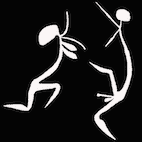John Namerredje Guymala
Circa 1926–1980? | Kunwinjku language group | Yaymini outstation, Western Arnhem Land
John Namerredje Guymala is a highly regarded Aboriginal artist from Western Arnhem Land, whose bark paintings hold enduring appeal among collectors and curators of Indigenous Australian art. Working predominantly in the 1970s, Guymala is most celebrated for his iconic depictions of Ngalkunburriyaymi, the fearsome female spirit associated with sorcery and the Rainbow Serpent.
His art work combines a powerful figurative style with a a nuanced understanding of ancestral subject matter, firmly anchoring his contribution within the wider Kunwinjku bark painting tradition.
Guymala’s paintings were collected by the Aboriginal Arts Board and international collectors, including Ed Ruhe, and are now sought after on the secondary market.
If you own a bark painting by John Namerredje Guymala and would like to know its current market value or are considering selling, feel free to get in touch with a clear image and any known provenance. We offer discreet appraisals and market guidance for collectors and estates.
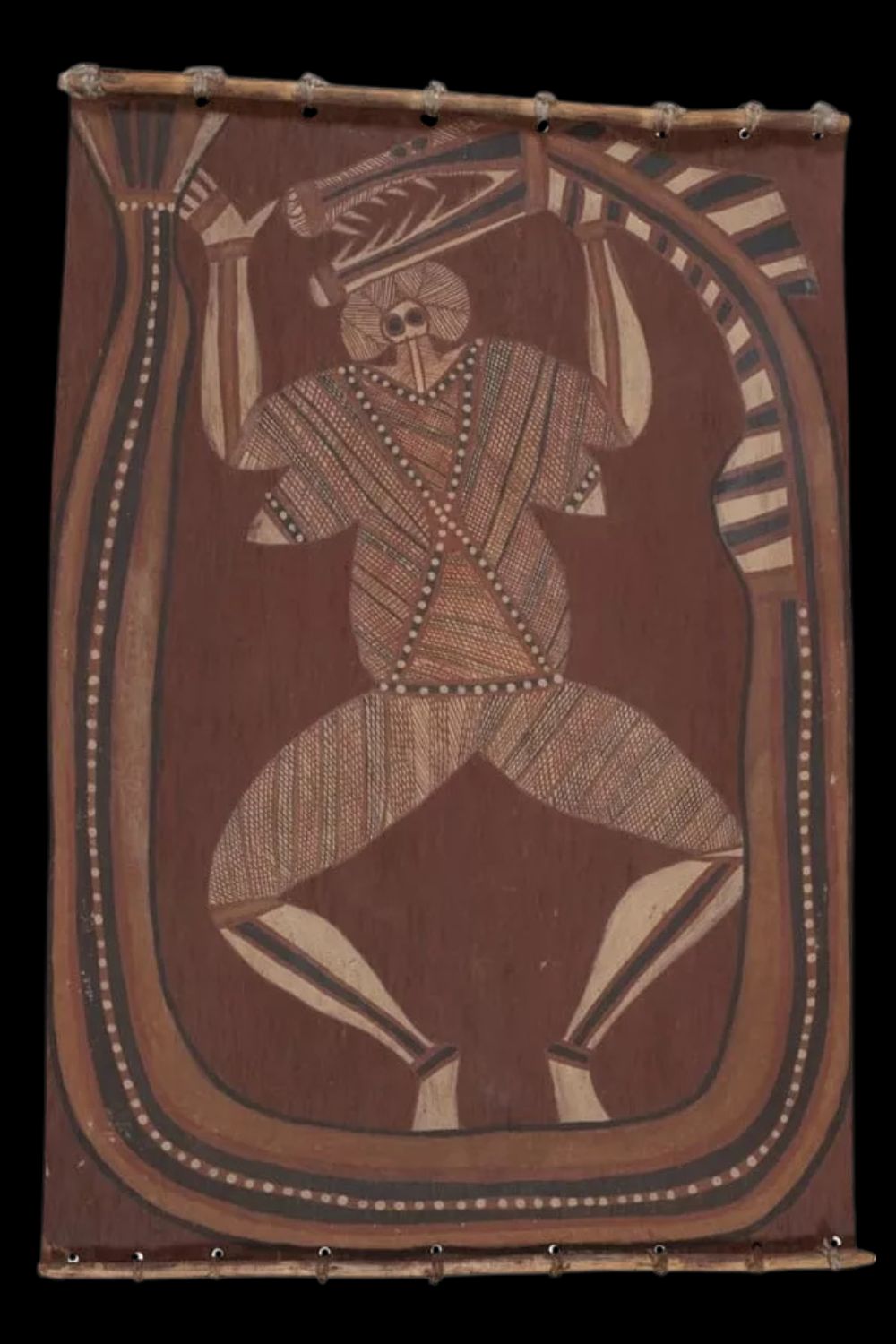
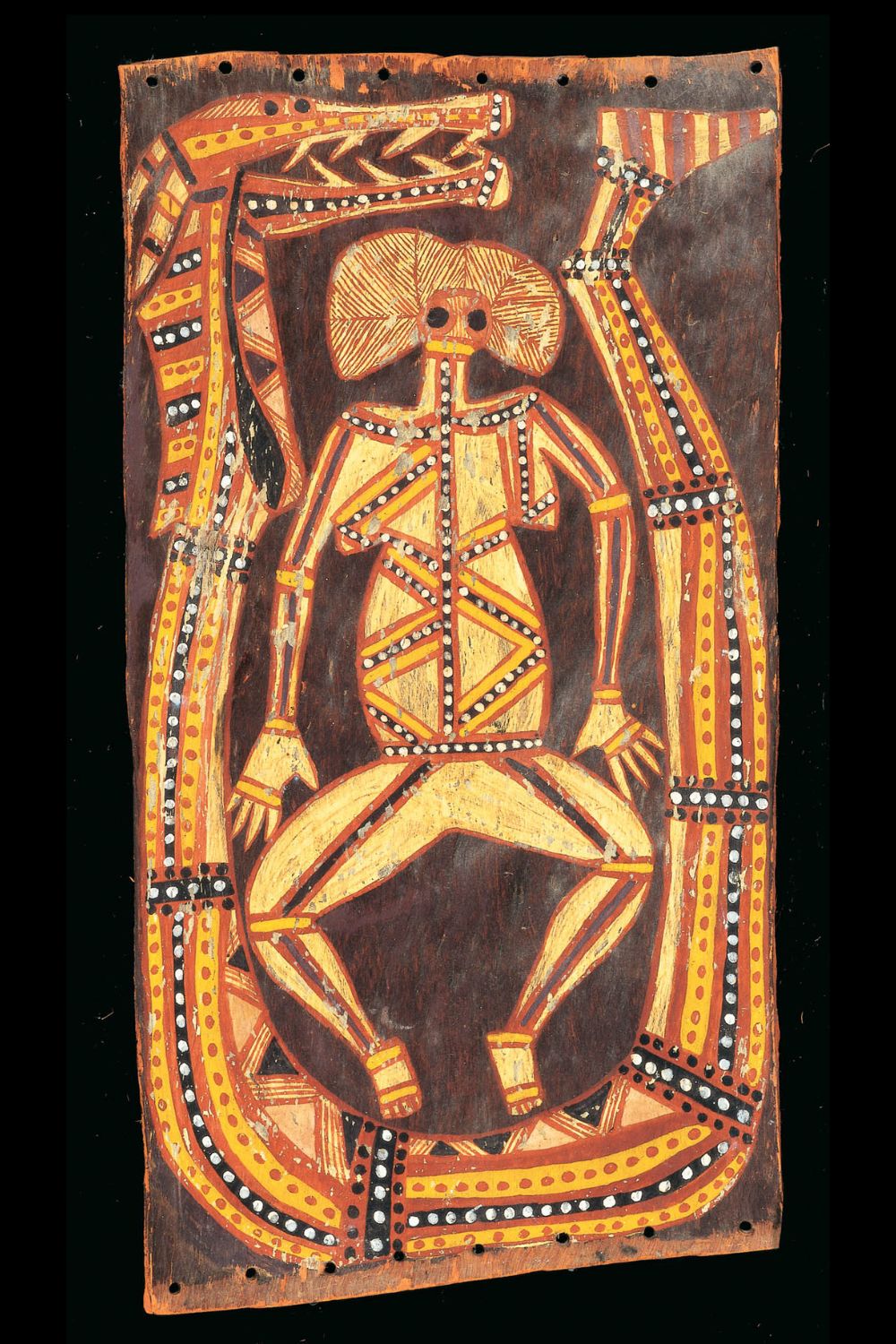
Artistic Style and Subjects
Early Work: Colour Blocks and Profile Figures
John Namerredje Guymala’s early bark paintings are immediately recognisable by their use of bold colour blocks and parallel rarrk, often applied in limited palettes of ochre, white, and black. Male figures are typically rendered with face in profile, while female spirits such as Ngalkunburriyaymi appear frontally, exuding a sense of spiritual power and control.
These compositions often feature monochrome backgrounds, allowing the spiritual presence of the subject to command full attention. While simple in layout, Guymala’s early paintings carry great ceremonial weight and visual tension, in keeping with the Arnhem Land painting tradition.
His mature style blends traditional rock art influences with refined aesthetic restraint—often featuring a single totemic figure. His early works are rare and collectable.
Later Works: Cross hatching Influence
In his later career, Guymala embraced crosshatching likely due to the influence of Wally Mandarrk, David Yirawala, and Curly Bardkadubbu, with whom Guymala had both social and artistic ties. This move to crosshatching in my opinion somewhat diminishes the impact of earlier artworks.
Among collectors, the most coveted works by Guymala often feature Ngalkunburriyaymi encircled by the Rainbow Serpent, a theme that visually balances narrative power with compositional harmony.
The story of the sisters who were swallowed by the rainbow serpent and became a yawkyawk is one of the most wide spread and important of the Arnhemland dreamings.

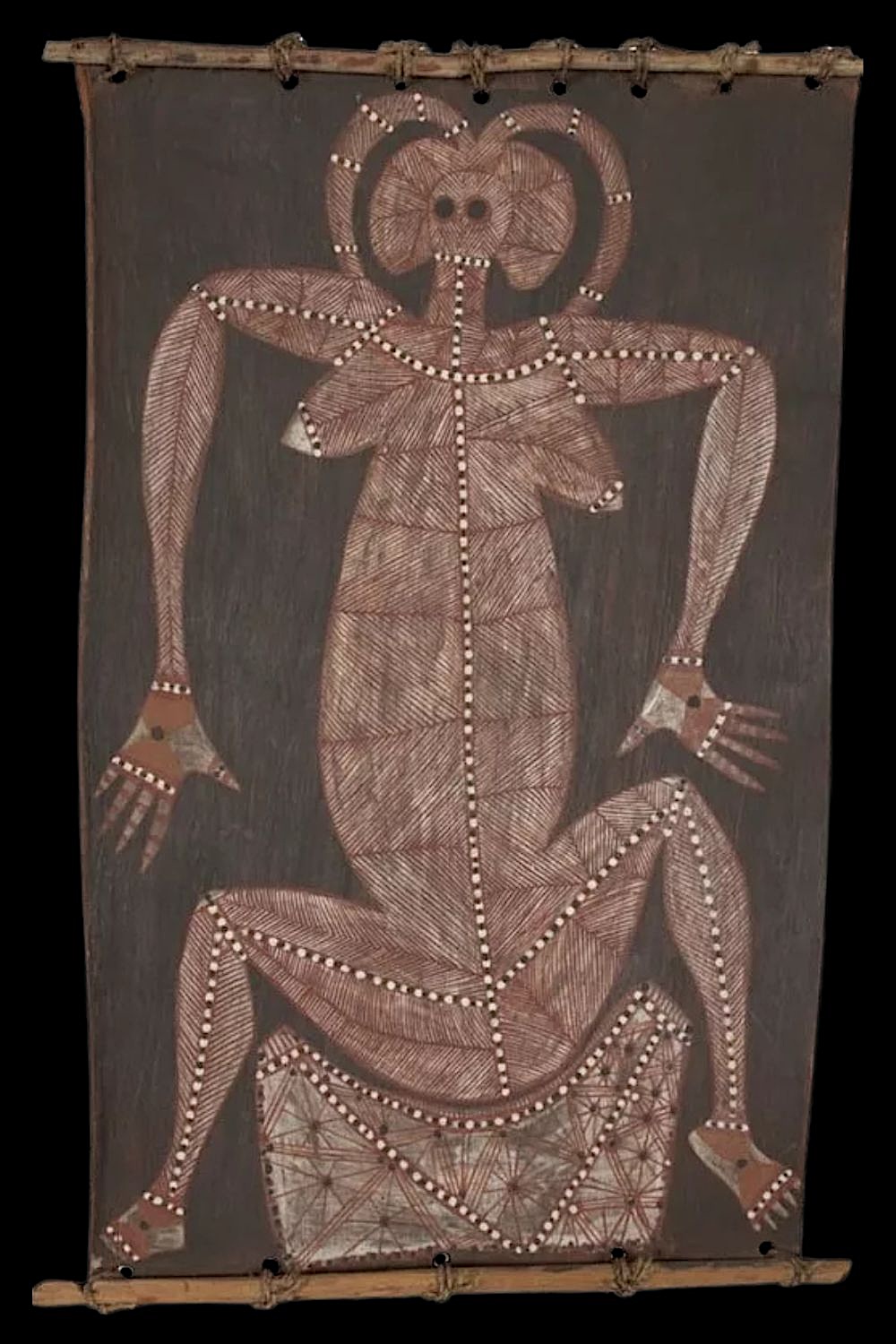
Biography
John Namerredje Guymala was born around 1926 in the stone country of Western Arnhem Land and spoke the Kunwinjku language, like his contemporaries Dick Murrumurru and Curly Bardkadubbu. Little is known about his early life, but his later years were spent at Yaymini outstation, a remote community located far south of Maningrida. There, he lived alongside renowned bark painter Wally Mandarrk.
Guymala was already considered a senior man when he began painting for the market in the 1970s. His works were acquired by the Aboriginal Arts Board and international private collectors such as Ed Ruhe, who played a significant role in bringing Arnhem Land bark painting to a global audience. His art was collected not for its decorative appeal but for its authentic cultural voice—a testament to Guymala’s status as a keeper of ancestral knowledge.
While paintings by Guymala are not signed, his distinctive style, thematic focus, and location at Yaymini make attribution possible by experienced collectors and scholars. His contribution remains vital in understanding the evolution of bark painting in Central Arnhem Land during a transitional moment in the 1970s.
Legacy and Market
John Namerredje Guymala’s legacy is defined by a limited but highly distinctive body of bark paintings that exemplify the transition between traditional ceremonial painting and the emerging Aboriginal art market of the 1970s.
His works are included in several private and institutional collections, though they are not widely exhibited. As interest in early Arnhem Land painters continues to grow, so too does the demand for Guymala’s work.
Paintings with clear provenance—especially those collected by Ed Ruhe or acquired through the Aboriginal Arts Board—can command significant attention at auction, particularly those featuring Ngalkunburriyaymi and Ngalyod.
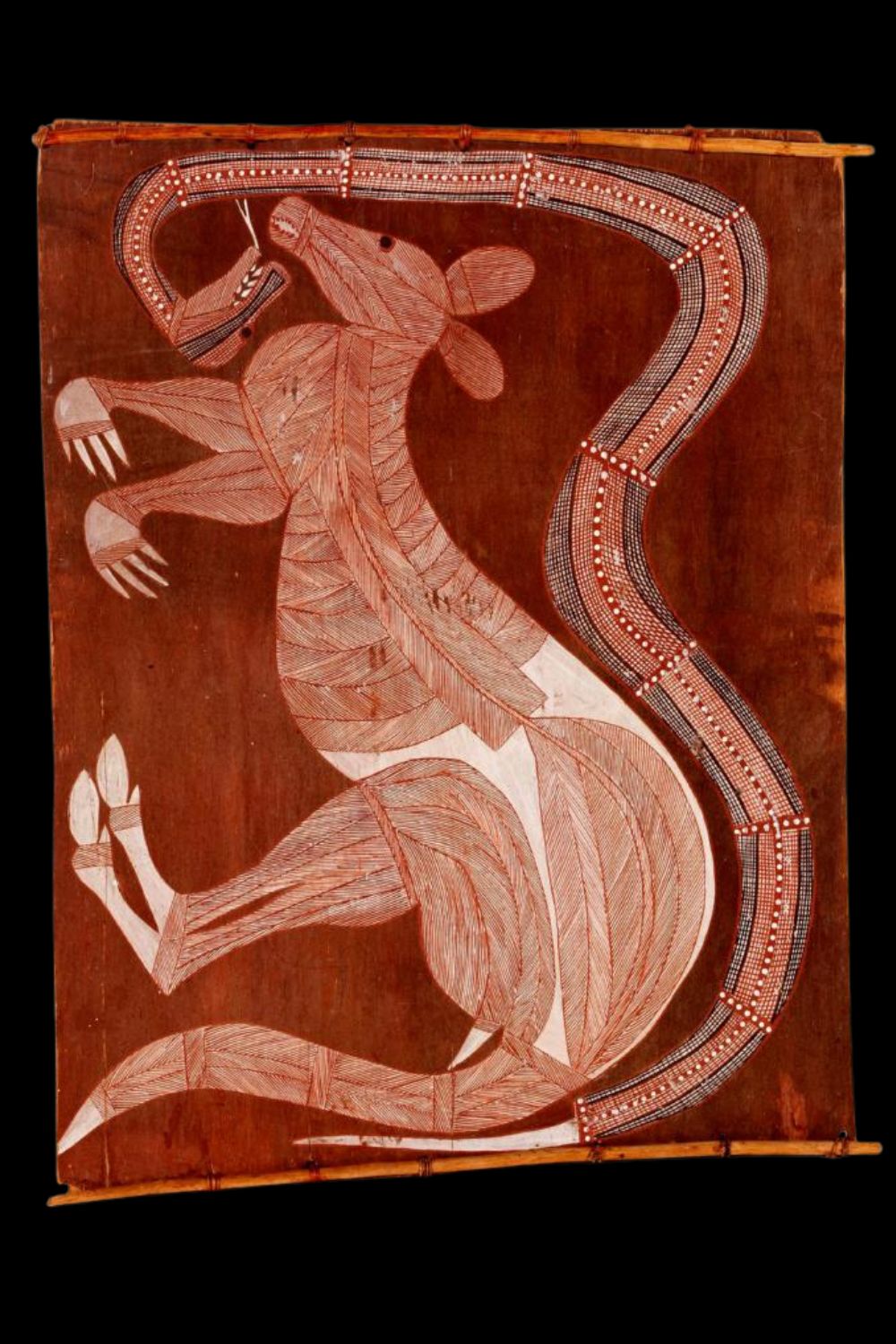
All images in this article are for educational purposes only.
This site may contain copyrighted material the use of which was not specified by the copyright owner.
Meaning of John Namerredje Guymala artworks
Ngalkunburriyaymi
The figure of Ngalkunburriyaymi, central to Guymala’s practice, is one of the most spiritually charged subjects in Kunwinjku art. Associated with sorcery, femininity, and danger, she is typically painted with exaggerated features—long, pendulous breasts, piercing eyes, and powerful limbs. This ancestral being was believed have been swallowed and absorbed by the rainbow serpent and her spirit still dwells in certain waterholes and has the power to kill or protect.
Guymala’s renditions are especially notable for the way they emphasise her role in transmitting sacred law, often encircled by Ngalyod the Rainbow Serpent, who brings rain and renewal. These mythic combinations are rare and powerful—offering collectors an intimate window into Arnhem Land cosmology.
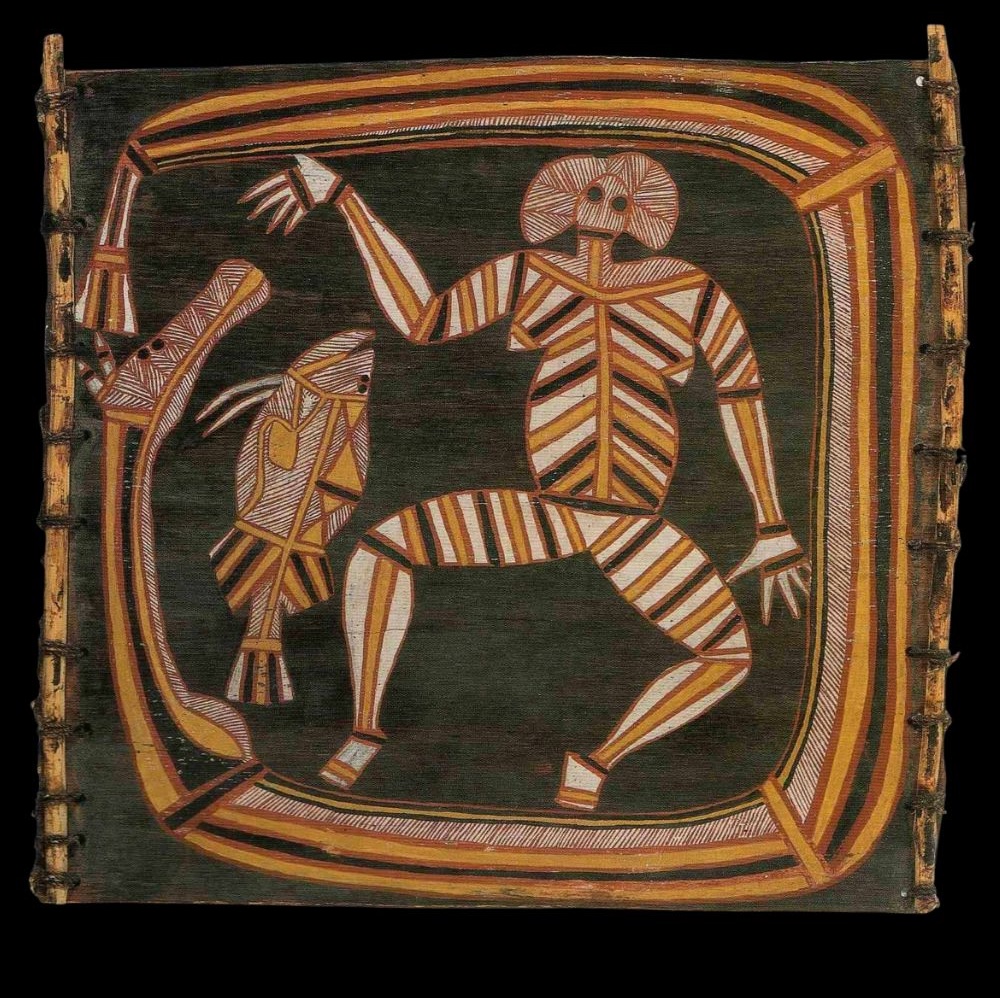
The Rainbow Serpent
Aboriginal people believe that Ngalyod, the Rainbow Serpent, created many sacred sites in Arnhem Land. Characteristics of Ngalyod vary from group to group and also depend on the site. He can change into a female serpent, and has both, powers of creation and destruction. Ngalyod is most strongly associated with rain, monsoon seasons, and the rainbows that arc across the sky like a giant serpent. He is most active in the wet season. In the dry season, he rests in billabongs and freshwater springs. When he rests he handles the production of water plants such as waterlilies, vines, algae, and cabbage tree palms.
When waterfalls roar down deep gorges, that Ngalyod is calling out. Large holes in stony banks of rivers and cliff faces are his tracks.
The rainbow serpent is deeply respected because it will swallow people who offend him. If Ngalyod swallows people during floods that he has created, he regurgitates them and they transform into new beings by his blood.
Aboriginal people respect sacred sites where the Rainbow Serpent resides. Near these sites cooking is not allowed. Cooking near the resting place of the great serpent will incur his wrath. Ngalyod can cause sickness, accidents and great floods, which make it easier for him to swallow his victims.
Although Ngalyod is generally feared throughout the Stone Country, he is a friend and protector of the tiny Mimi Spirits.

